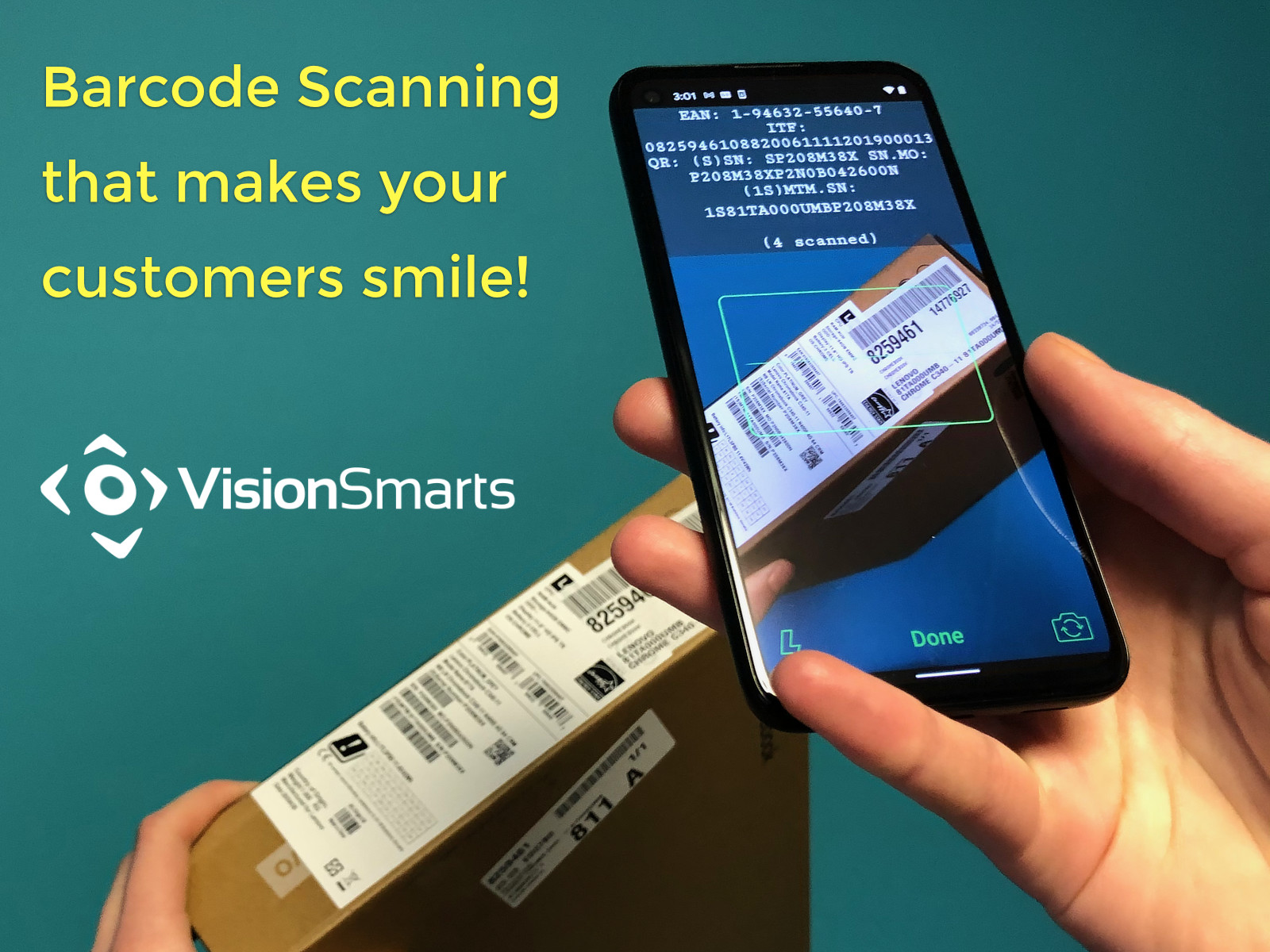VSBarcodeReader, the retail-grade mobile barcode scanner SDK that powers pic2shop is available for licensing from Vision Smarts.
The pic2shop barcode library is fully proprietary software that has been continuously optimized since 2009. The performance and the robustness of the barcode reader library greatly benefited from the experience of tens of millions of users worldwide running pic2shop and other apps.
The barcode API has grown to support many more barcode formats than pic2shop. In addition to UPC-A, UPC-E, EAN-13, EAN-8, and QR codes, the library supports EAN+2, EAN+5, GS1 Databar Omnidirectional, GS1 Databar Expanded, GS1 Databar Expanded Stacked, GS1 Databar Limited, Code 128, Code 39, Codabar, Code 93, ITF, Standard 2 of 5, Telepen, and DataMatrix.
We have made a showcase app so you can quickly try it for yourself:
Enjoy a straightforward API, with no intricate class structure to figure out. Just copy the sample code to your app and run. Then make as many or as few changes to the UI as you need. There are no dependencies to install, no tuning at all.
The barcode scanner’s speed is guaranteed to make users and employees happy. The ability to reliably scan barcodes of all origins, even out of spec or damaged, will greatly reduce your support costs. Licensing is no hassle with no gotchas.
You will enjoy a scanner that is fast and fun to use. No more struggles to find the right distance or the right angle, trying to avoid glare or shadows. You can achieve your tasks faster and forget about the barcode scanner.

Over the years we have witnessed incredibly diverse use cases for our mobile barcode scanner SDK. Here are some of the largest categories.
Scan the barcode of a product in a store and check online prices, availability, or customer reviews. That was the hot-ticket item in 2010: our first licensee was the British shopping app Sccope. This category is still going strong with the addition of corporate goodness scores, nutritional info, etc.
That is the hot-ticket app today. Go around a convenience score scanning items as you pick them up, pay in the app, skip the checkout line and walk out. Coming soon to all supermarkets, convenience stores, and home improvement centers near you.
Some apps only offer self-scanning but not self-checkout (yet). Some retail chains issue barcode-enabled smartphones to their associates to let them check inventory, help customers, or as mobile point-of-sales.
On the factory floor, barcodes are everywhere: on every machine, every product, every package, on all parts and sub-parts all the way down to electronic chips. Robots have barcodes and people too. Enabling employees to scan barcodes with smartphones opened up a rich set of time-saving innovations and process improvements.
Scan a QR code on a bill to fill in payment info. Scan a QR code off your dentist's smartphone to initiate an instant bank transfer. Banking and payments apps have fully embraced barcodes.
Scanning a QR code is also the safest, most reliable, and most convenient way to transfer encryption keys or a signed message. It easily beats the wireless alternatives relying on WiFi or Bluetooth.
Luxury brands have been among the first to offer barcode apps to their customers. They get personalized product recommendations, enjoy special offers, scan their loyalty cards, and more.
When you are counting calories, scanning the barcode off of a food item is very convenient, avoids errors and saves a lot of time. The same apps also track water intake, exercise, and many other health factors.
Small libraries, for example school libraries, can now be managed with just smartphones equipped with a barcode-reader app.
People with large stacks of books, DVDs, CD, video games, easily inventory their collection with barcode scanner apps.
Checking concert, bus or train tickets at the gate only requires a smartphone. The same goes for scanning attendees' badges at the booths of a trade show.
Independent delivery couriers use their own smartphone to scan shipping labels and receipts.
Many governments-issued IDs, like US driver's licenses, carry barcodes. Local governments officials scan them, as do shopkeepers performing age checks.
In hospitals worldwide, patients wear barcoded bracelets. Every biological sample, every box or vial of medication carries one too. So does every form and test report. Now often smartphones replace the bulky workstations on wheels, or they offer whole new applications.